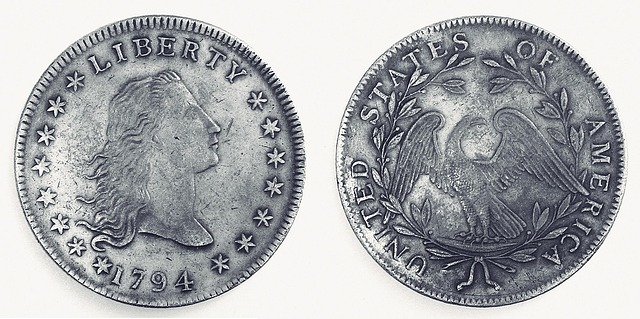10 Rare Coins Wanted by Collectors: Discover Their Value and Significance in Numismatics
Numismatics captivates collectors worldwide as they seek treasures that combine historical significance with monetary value. From ancient Roman denarii to modern commemorative issues, certain coins command extraordinary attention in the collecting community. These sought-after pieces represent pivotal moments in history, showcase exceptional craftsmanship, or possess unique characteristics that make them incredibly scarce. Understanding which coins collectors actively pursue provides insight into the fascinating world of numismatics and the factors that drive market demand.

The world of numismatics encompasses far more than simply collecting old coins. It represents a pursuit that bridges history, art, economics, and archaeology. Collectors seek specific pieces that tell stories of civilizations, commemorate significant events, or demonstrate exceptional minting techniques. The most coveted coins often combine rarity with historical importance, creating a perfect storm of desirability among serious numismatists.
The History Behind Rare Coins and Their Collectors
Coin collecting traces its roots to ancient times when wealthy Romans collected Greek coins as symbols of cultural appreciation. Modern numismatics emerged during the Renaissance when scholars began systematically studying coins as historical artifacts. The hobby gained momentum in the 19th century as standardized grading systems developed, allowing collectors to accurately assess condition and value. Today’s collectors continue this tradition, seeking pieces that represent significant historical periods, from ancient civilizations to modern commemorative issues. The evolution of collecting has transformed from casual accumulation to sophisticated investment strategies, with collectors focusing on specific series, time periods, or geographical regions.
Evaluating Coin Condition: Factors That Impact Value
Coin condition serves as the primary determinant of value in numismatics. Professional grading organizations use standardized scales ranging from Poor (P-1) to Perfect Mint State (MS-70) to assess condition. Key factors include surface preservation, strike quality, luster retention, and the presence of contact marks or environmental damage. Even minor differences in grade can result in dramatic value variations. For example, a coin grading MS-65 might be worth significantly more than the same coin in MS-63 condition. Collectors must understand how wear patterns, cleaning damage, and storage conditions affect long-term value. Professional authentication and grading services provide third-party verification, ensuring accurate condition assessment and market confidence.
Understanding Market Trends in Rare Coin Collecting
The rare coin market experiences cyclical trends influenced by economic conditions, collector demographics, and historical events. Precious metal content often drives base values, while rarity and collector demand create premiums above intrinsic worth. Recent decades have seen increased interest in certified coins, with collectors preferring professionally graded examples over raw specimens. Technology has revolutionized the market through online auctions, digital catalogs, and real-time pricing databases. Generational changes affect collecting patterns, with younger collectors often focusing on different series than traditional enthusiasts. Market analysis reveals that coins with compelling historical narratives or exceptional rarity tend to maintain value during economic fluctuations.
Identifying Counterfeit Coins: Tips for Collectors
Counterfeit detection represents a critical skill for serious collectors, as sophisticated reproductions continue to challenge even experienced numismatists. Authentic coins exhibit specific weight, dimensions, and magnetic properties that counterfeiters struggle to replicate perfectly. Visual inspection reveals telltale signs including incorrect fonts, improper edge details, or surface textures inconsistent with genuine examples. Advanced techniques involve examining die characteristics, studying strike patterns, and analyzing metal composition through non-destructive testing methods. Collectors should purchase from reputable dealers, seek professional authentication for expensive pieces, and maintain detailed documentation. Education remains the best defense against counterfeits, with collectors encouraged to study genuine examples and understand the specific characteristics of their collecting focus.
Expert Insights on Building a Valuable Coin Collection
Successful collecting requires strategic planning, patience, and continuous education. Experts recommend focusing on specific areas rather than attempting to collect everything, allowing for deeper knowledge development and more meaningful acquisitions. Quality consistently outperforms quantity in long-term value appreciation. Building relationships with reputable dealers, attending coin shows, and joining numismatic organizations provide access to knowledge and opportunities. Documentation proves essential for insurance purposes and future sales, with collectors maintaining detailed records of purchases, grades, and provenance. Storage considerations include proper holders, controlled environments, and security measures to preserve condition over time.
| Coin Type | Estimated Value Range | Key Factors |
|---|---|---|
| Morgan Silver Dollars (Key Dates) | $500 - $50,000+ | Date, mintmark, condition |
| Walking Liberty Half Dollars | $25 - $5,000+ | Year, mint, grade |
| Mercury Dimes (1916-D) | $1,000 - $15,000+ | Condition, authenticity |
| Indian Head Pennies | $10 - $2,000+ | Date, condition, variety |
| Peace Silver Dollars | $35 - $10,000+ | Year, mint, grade |
Prices, rates, or cost estimates mentioned in this article are based on the latest available information but may change over time. Independent research is advised before making financial decisions.
The pursuit of rare coins continues to attract collectors who appreciate the intersection of history, artistry, and investment potential. Whether focusing on ancient civilizations or modern commemoratives, successful collecting requires knowledge, patience, and careful attention to market conditions. The coins that capture collector attention today will likely continue appreciating as historical artifacts become increasingly scarce. Understanding the factors that drive desirability helps collectors make informed decisions while building collections that provide both personal satisfaction and potential financial returns.




